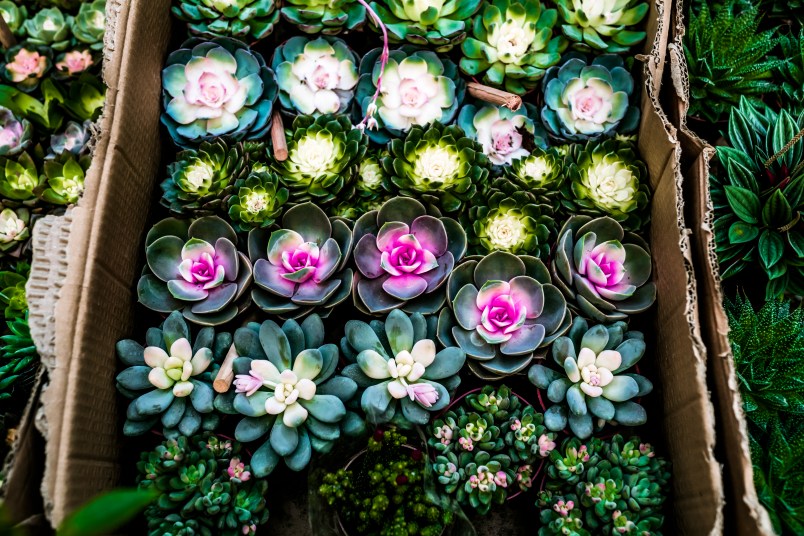Grow Your Own Succulent Garden in 5 Easy Steps

Succulents are one of the most popular plants to grow both inside and outside the home due to their sculptural form and low-maintenance nature. Hardy, and easy-going, they’re also fantastic plants for propagating, which means its incredibly easy to grow the succulent garden of your dreams.
Whether you’re planning on creating a beautifully curated terrarium, or simply love the idea of clusters of succulents lining each and every surface in the home, your home decor is sure to look a lot brighter with the addition of more plants.
The key secret to growing a succulent garden is to start with the succulents you already have. And because succulents are one of the best plants to propagate, you won’t need to worry about buying plants from the store.
Propagating succulents is a more straightforward process than you might think. In fact, it’s so easy you can’t fail. Do you hear that? Cannot fail. Just follow these directions and you’ll be living in a thriving urban succulent jungle before you know it.
Step One
If you have a succulent that’s starting to look leggy, now’s the time to propagate. What’s a leggy succulent, you ask? Sadly, it’s not a plant that looks like Heidi Klum. It happens when a succulent isn’t getting enough light and starts to stretch out, with a woody stem and widely spaced leaves.
Your first step is removing the lower leaves of the plant. Carefully, though! Grab and wiggle a leaf until it snaps off, making sure you get the whole leaf so it can grow roots of its own. Remember: A partial leaf will not a succulent make.
Step Two
Now that you’ve removed the lower leaves, you should be left with a small rosette on a short stem. Now, you make like Edward Scissorhands and cut it off with a sharp pair of scissors or a knife.
Don’t discard the rosette or the pot with the stem though — they’ll both be back for round two shortly. Stay tuned.
Step Three
Step three is actually the most important step of all, and it requires you to do nothing. That’s right — absolutely nothing. You just need to sit tight and wait for your amputated plant parts to dry out and create a callous where they’ve been removed.
Planting the leaves immediately will mean they don’t have a chance to heal and will rot in the soil. Leave them out to dry for approximately a week.
Step Four
Now that they’ve calloused over it’s time to place the leaves on top of the soil. Not in, just on top. They’ll need lots of indirect sunlight and little else.
Now, go on holiday for a few weeks and when you get back you’ll see pink tendrils or roots sprouting from the ends which will soon turn into baby plants. At this point, mist with water every other day to keep the soil moist and the babies fed.
Step Five
And that’s just about all she wrote. Once you see the mother leaf starts to wither and die, you can remove it and plant the new offspring in its own pot. You’ll find each leaf dances to the beat of its own drum — some will take off while others won’t, but that’s Mother Nature for you. She’s a fickle beast.
But wait…theres more.
That stem from before? If you’ve left it to dry out in its pot you’ll now notice it’s also started propagating itself from where the original leaves were removed.
Oh, and that rosette — only its stem has calloused over, you can replant it too. Isn’t life wonderful? As soon as we figure out how to do the same with a $100 note we’ll let you know.
How to Grow Succulents in a Glass Container
Love the look of terrariums? So do we. To begin, ensure your jar or glass vessel is clean and sanitized – you don’t want any bacteria harming your succulent!
Then, place half an inch of gravel or tiny pebbles in the bottom of the jar, following by half an inch of crushed charcoal.
Mix equal parts potting soil and sand into a bowl, pour into the jar. Add enough water to moisten the mixture, then plant.
This article originally appeared on our sister site, Homes to Love.













